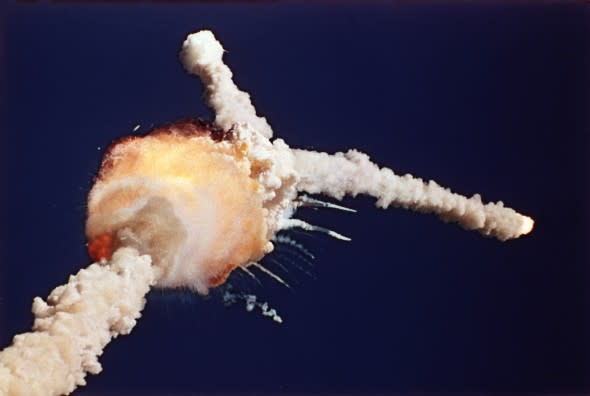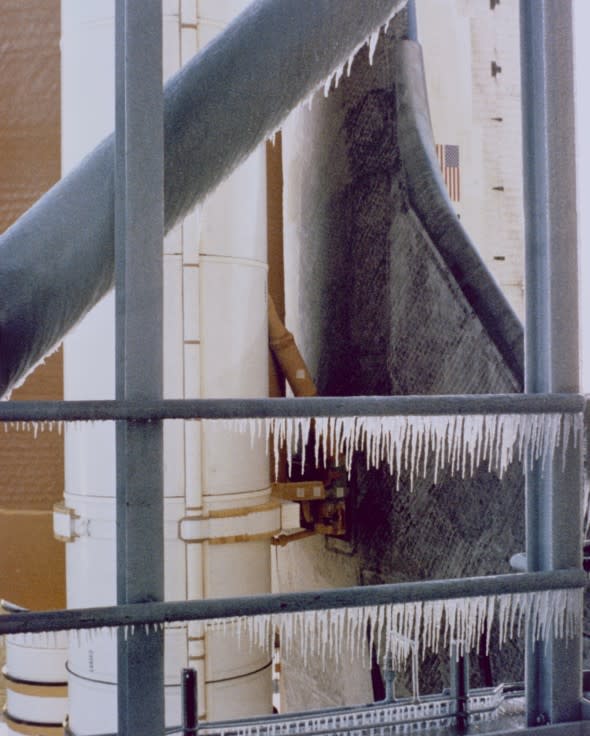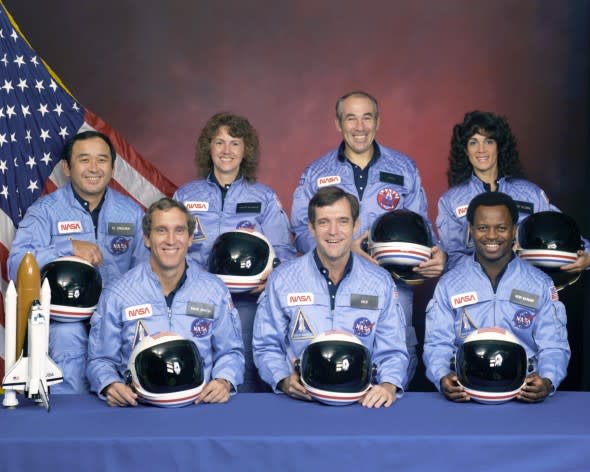How record-setting cold contributed to the space shuttle Challenger disaster on Jan. 28, 1986
The chilly morning of Jan. 28, 1986, ended in disaster as the space shuttle Challenger broke apart off the coast of Florida in one of the worst tragedies in the history of NASA.

In this Jan. 28, 1986 file photo, the space shuttle Challenger explodes shortly after lifting off from the Kennedy Space Center in Cape Canaveral, Fla. (AP Photo/Bruce Weaver, File)
The mission, known as STS-51-L, was the 10th flight of the Challenger space shuttle and the 25th flight of the Space Shuttle program.
The launch ended in a catastrophic failure of the shuttle's rockets 73 seconds after liftoff, killing all seven crew members, including Christa McAuliffe, a teacher who would have been the first-ever American civilian to fly in space.
"We've never had a tragedy like this. And perhaps we've forgotten the courage it took for the crew of the shuttle; but they, the Challenger Seven, were aware of the dangers, but overcame them and did their jobs brilliantly. We mourn seven heroes," President Ronald Reagan said during an address to the nation later that day.
The contrast is palpable. pic.twitter.com/pJfKpevj8A
— Chris B - NSF (@NASASpaceflight) January 28, 2019
The Report of the Presidential Commission on the Space Shuttle Challenger Accident investigated the cause of the accident and traced the cause of the explosion back to the failure of an O-ring joint in one of the two Solid Rocket Boosters (SRBs) used to propel the shuttle into space.
The report detailed every event leading up to, during and following the ill-fated mission.
"The specific failure was the destruction of the seals that are intended to prevent hot gases from leaking through the joint during the propellant burn of the rocket motor. The evidence assembled by the Commission indicates that no other element of the space shuttle system contributed to this failure," the report stated.
Visual evidence of the failure of an O-ring was observed on video less than 1 second after ignition.
"Just after liftoff at .678 seconds into the flight, photographic data shows a strong puff of gray smoke was spurting from the vicinity of the aft field joint on the right solid rocket booster," NASA explained on its website.
More puffs of smoke were observed shortly after the seal failed, allowing hot gas to escape. Later in the flight, this escaping gas caught on fire and ultimately led to the failure of the larger external fuel tank and an explosion that caused Challenger to break apart over the Atlantic Ocean.
Wreckage recovered following the incident also suggested a major failure in the O-ring was the primary cause of the explosion.
The weather conditions leading up to the launch were likely the primary reason why the O-ring failed after ignition.
A record-setting chill descended across the Florida Peninsula with temperatures bottoming out in the 20s F near the launch pad just hours before liftoff on Jan. 28, 1986.
This is significantly lower than the typical low temperature of around 50 F along Florida's Space Coast in late January and was the lowest temperature ever for a launch of a space shuttle.
"O-ring hardness is a function of temperature and may have been another factor in joint performance," the report stated.
In addition to affecting the resiliency of the O-rings, the freezing conditions could have allowed ice to form in the joints, further compromising the joint's ability to perform properly.
Analysis after the disaster revealed that the O-rings were destroyed shortly after ignition.

Icicles formed on the launch pad and service tower in the evening and early morning hours on January 28, 1986. When it was determined that air temperatures combined with wind speeds were going to cause freezing conditions, a decision was made to leave all water supply lines on slow "trickle" to prevent line burst. This action resulted in a surreal scene for the Florida launch facility. (Photo/NASA)
Not only did the freezing weather affect the O-rings, but it also caused ice to form around the launch pad. This included the only evacuation route that astronauts could take in the event of an emergency prior to launch.
"Had the crew been required to evacuate the Orbiter on the launch pad, they would have been running on an icy surface," the report said.
"The Commission concluded that the freeze protection plan for launch pad 39B was inadequate. The Commission believes that the severe cold and presence of so much ice on the fixed service structure made it inadvisable to launch on the morning of Jan. 28, and that margins of safety were whittled down too far," the report added.
"If the decision-makers had known all of the facts, it is highly unlikely that they would have decided to launch," according to the report.
Strong wind sheer, or changing wind speed or direction with altitude, was another weather factor in Challenger's launch on that frigid January morning, adding extra forces on the shuttle's rockets.
"The wind shear caused the steering system to be more active than on any previous flight," NASA stated.

This undated file photo provided by NASA shows the crew of the Space Shuttle Challenger mission 51L. All seven members of the crew were killed when the shuttle exploded during launch on Jan. 28, 1986. From front left, are: Pilot Michael J. Smith, Commander Francis R. (Dick) Scobee, and mission specialist Ronald E. McNair. Rear left are: mission specialist Ellison Onizuka, teacher Christa McAuliffe, payload specialist Gregory Jarvis, and mission specialist Judith Resnik. (NASA via AP, File)
Following the disaster, all space shuttle launches were suspended for 32 months while a full investigation could take place and corrective measures could be taken to help prevent similar disasters in the future.
Space Shuttle Discovery launched on Sept. 29, 1988, and was declared a return to flight mission for the space shuttle program. This was the first flight in over 20 missions to have the capacity to bailout during launch in the event of an emergency.
Every year, the lost crews of the Space Shuttle Challenger, Space Shuttle Columbia and Apollo 1 are commemorated on the Day of Remembrance held near the end of January.

